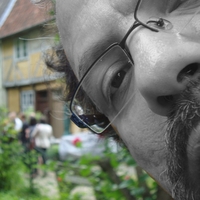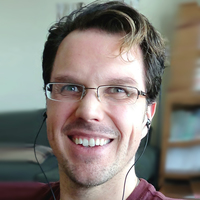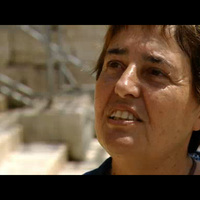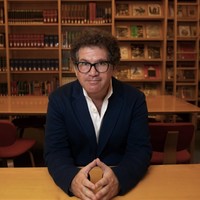
David J Knight
Related Authors
Manuel Arroyo-Kalin
University College London
Ruben López-Cano
Escola Superior de Música de Catalunya
Marc Champagne
Kwantlen Polytechnic University
David Seamon
Kansas State University
Caroline J . Tully
University of Melbourne
Enrico Cirelli
Università di Bologna
Yannis Hamilakis
Brown University
Olga Palagia
National & Kapodistrian University of Athens
Ittai Weinryb
Bard College
Francesca Gazzano
University of Genova
InterestsView All (15)










Uploads
Papers by David J Knight
In this article a new technology to measure acoustic 3D Impulse Responses in historic interiors is described and applied to the sixth-century church of San Vitale at Ravenna, Italy. A proper assessment of the degree of sound spatial accuracy is requested during sound reproduction in 3D listening rooms, initially designed for acoustical virtual reality, but presently also employed in the entertainment/cinema industry (Immsound, Auro-3D, NHK 22.2). The innovative procedure for measuring and analysing the complete spatial sound information is presented and the description of this new technique is emphasised.
The complimentary archaeological visual virtual reconstruction of this important UNESCO World Heritage Site has also revealed otherwise obscured yet intentional details of its architectural design. A combination of archaeological and acoustical methodologies were employed to measure and model San Vitale. The modern metric measurements of San Vitale were converted to sixth-century units and significant direct correlations were newly identified with the octagonal Arian baptistery at Ravenna. Hidden intentional symmetries of San Vitale were also identified during the process of virtual modelling and by applying two-dimensional isovist fields.
The acoustical survey of 3D Impulse Responses was recorded between the range 20Hz and 20000Hz and from these were calculated acoustical characteristics such as Reverberation Time (RT20 and RT30) and speech and music reception Clarity (C50 and C80). The results of a campaign to measure the internal spatial parameters of San Vitale, employing the new methodology, are utilised to recreate historical components of the church and re-sounding original music of the little known Ravennate rite. A new vocal rendition of the Ravennate chant Lux de luce Deus tenebris illuxit Averni was recorded on the ground floor and in the upper matroneum gallery. A further vocal performance was recorded in a 90Hz anechoic chamber and convolved with the surveyed Impulse Responses of the church. These new observations are presented here with a re-evaluation of San Vitale’s contextual meaning within sixth-century Mediterranean architectural and social history.
Books by David J Knight
In this article a new technology to measure acoustic 3D Impulse Responses in historic interiors is described and applied to the sixth-century church of San Vitale at Ravenna, Italy. A proper assessment of the degree of sound spatial accuracy is requested during sound reproduction in 3D listening rooms, initially designed for acoustical virtual reality, but presently also employed in the entertainment/cinema industry (Immsound, Auro-3D, NHK 22.2). The innovative procedure for measuring and analysing the complete spatial sound information is presented and the description of this new technique is emphasised.
The complimentary archaeological visual virtual reconstruction of this important UNESCO World Heritage Site has also revealed otherwise obscured yet intentional details of its architectural design. A combination of archaeological and acoustical methodologies were employed to measure and model San Vitale. The modern metric measurements of San Vitale were converted to sixth-century units and significant direct correlations were newly identified with the octagonal Arian baptistery at Ravenna. Hidden intentional symmetries of San Vitale were also identified during the process of virtual modelling and by applying two-dimensional isovist fields.
The acoustical survey of 3D Impulse Responses was recorded between the range 20Hz and 20000Hz and from these were calculated acoustical characteristics such as Reverberation Time (RT20 and RT30) and speech and music reception Clarity (C50 and C80). The results of a campaign to measure the internal spatial parameters of San Vitale, employing the new methodology, are utilised to recreate historical components of the church and re-sounding original music of the little known Ravennate rite. A new vocal rendition of the Ravennate chant Lux de luce Deus tenebris illuxit Averni was recorded on the ground floor and in the upper matroneum gallery. A further vocal performance was recorded in a 90Hz anechoic chamber and convolved with the surveyed Impulse Responses of the church. These new observations are presented here with a re-evaluation of San Vitale’s contextual meaning within sixth-century Mediterranean architectural and social history.